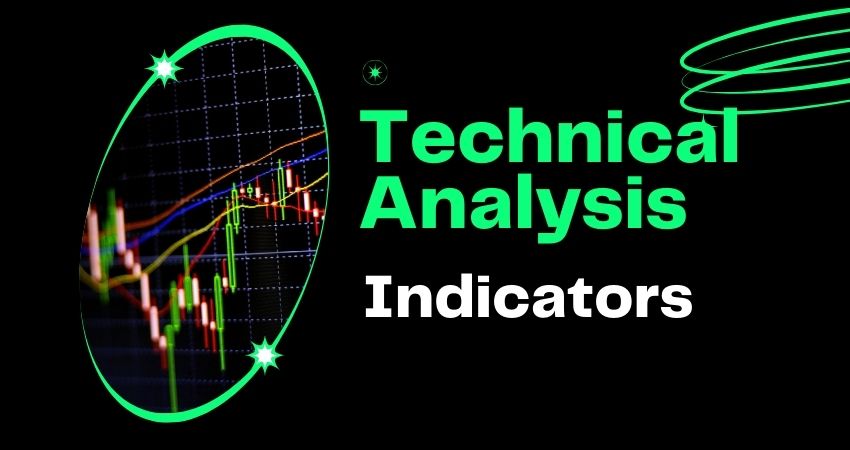
Top Swing Trading Tips 2024
August 31, 2024
Fear and Greed in Trading
September 3, 2024Unlocking the Secrets of Technical Analysis Indicators

Technical Analysis Indicators
Introduction
When it comes to trading and investing, a wealth of tools are available to help you make informed decisions. One of the most popular and powerful tools is technical analysis. But what exactly is technical analysis, and why is it so important for traders?
Technical analysis is a method used to evaluate and predict the future price movements of an asset based on historical price data and volume. Unlike fundamental analysis, which looks at the intrinsic value of an asset, technical analysis focuses solely on price charts, patterns, and various indicators to forecast trends. For traders, especially those involved in short-term trades, technical analysis is indispensable as it offers insights into market behavior and potential price movements.
What are Technical Analysis Indicators?
Technical analysis indicators are mathematical calculations based on historical price, volume, or open interest information that help traders identify potential trading opportunities. These indicators analyze market trends, identify entry and exit points, and predict future price movements. Unlike fundamental analysis, which considers economic factors, technical indicators are purely based on price action and market data.
Types of Technical Analysis Indicators
There are two main types of technical analysis indicators:
- Leading Indicators: Predict future price movements by providing signals before a trend reversal or a new trend begins. Examples include the Relative Strength Index (RSI) and the Stochastic Oscillator.
- Lagging Indicators: Confirm the existence of a trend after it has already started. They tend to perform well in trending markets but may provide false signals in a choppy or sideways market. Moving averages (MA) and Moving Average Convergence Divergence (MACD) are examples of lagging indicators.
Commonly Used Technical Indicators
Moving Averages (MA)
Moving averages smooth out price data to identify the direction of the trend. They are often used to determine support and resistance levels.
Relative Strength Index (RSI)
RSI is a momentum indicator that measures the speed and change of price movements, helping to identify overbought or oversold conditions.
Moving Average Convergence Divergence (MACD)
MACD is a trend-following momentum indicator that shows the relationship between two moving averages of a security’s price. It helps traders identify changes in momentum, strength, and direction of a trend.
Bollinger Bands
Bollinger Bands consist of a middle band (a moving average) and two outer bands set at a certain number of standard deviations away from the middle band. They are used to gauge volatility and overbought or oversold conditions.
Stochastic Oscillator
The Stochastic Oscillator is a momentum indicator that compares a particular closing price of a security to a range of its prices over a certain period. It helps in identifying potential reversal points.
Understanding Moving Averages (MA)
Moving averages are a foundational technical indicator used by many traders to analyze market trends.
Simple Moving Average (SMA)
The Simple Moving Average (SMA) calculates the average of a selected range of prices by the number of periods in that range. It helps smooth out price data and makes it easier to identify trends.
Exponential Moving Average (EMA)
The Exponential Moving Average (EMA) gives more weight to recent prices, making it more responsive to new information. It is often used to identify trend reversals or to confirm a trend’s direction.
How to Use MAs in Trading
Moving averages can help traders identify the overall direction of the market, support and resistance levels, and potential entry or exit points.
Diving Deep into the Relative Strength Index (RSI)
The Relative Strength Index (RSI) is a popular momentum oscillator that ranges from 0 to 100.
What is RSI?
RSI measures the magnitude of recent price changes to evaluate whether an asset is overbought or oversold. An RSI above 70 is typically considered overbought, while below 30 is considered oversold.
How RSI is Calculated
RSI is calculated using the formula:RSI=100−(1001+RS)\text{RSI} = 100 – \left( \frac{100}{1 + RS} \right)RSI=100−(1+RS100)
where RS (Relative Strength) is the average gain of up periods during the specified time frame divided by the average loss of down periods.
Using RSI for Entry and Exit Points
Traders use RSI to identify potential entry and exit points. For instance, a stock with an RSI below 30 might be considered undervalued, presenting a buying opportunity.
Exploring Moving Average Convergence Divergence (MACD)
What is MACD?
The Moving Average Convergence Divergence (MACD) is a trend-following indicator that reveals changes in the strength, direction, momentum, and duration of a trend in a stock’s price.
Components of MACD
- MACD Line: The difference between the 12-day EMA and the 26-day EMA.
- Signal Line: A 9-day EMA of the MACD line.
- Histogram: The difference between the MACD line and the Signal line.
Interpreting MACD Signals
When the MACD line crosses above the Signal line, it generates a bullish signal, indicating it may be a good time to buy. Conversely, a bearish signal is generated when the MACD line crosses below the Signal line.
Understanding Bollinger Bands
What Are Bollinger Bands?
Bollinger Bands consist of a middle band (a simple moving average) and two outer bands that are set two standard deviations above and below the middle band.
How to Read Bollinger Bands
When the price moves closer to the upper band, the asset is considered overbought; when it moves toward the lower band, it is considered oversold.
Strategies Using Bollinger Bands
Traders often use Bollinger Bands to identify periods of high or low volatility and potential reversal points.
Introduction to Stochastic Oscillator
What is Stochastic Oscillator?
The Stochastic Oscillator is a momentum indicator that compares a particular closing price to a range of its prices over a certain period.
Calculation and Components
The Stochastic Oscillator consists of two lines: %K (the current close relative to the range) and %D (a moving average of %K).
How to Use Stochastic Oscillator in Trading
Traders use it to identify overbought or oversold conditions and potential reversal points.
Combining Multiple Indicators for Better Trading Decisions
Combining multiple indicators can help traders get a more accurate picture of the market. For example, using both RSI and MACD together can provide confirmation signals for buying or selling.
Common Mistakes When Using Technical Indicators
Over-reliance on Indicators
Relying too much on technical indicators without considering market fundamentals can lead to poor trading decisions.
Ignoring Market Trends and Fundamentals
Technical indicators should be used in conjunction with an understanding of market trends and fundamental factors.
Tips for Effective Use of Technical Indicators
- Keep it Simple: Avoid using too many indicators, which can lead to confusion and conflicting signals.
- Regularly Backtest Strategies: Ensure your strategies are effective by backtesting them against historical data.
- Stay Updated with Market Changes: The market is dynamic; stay informed about market news and changes.
The Role of Technical Analysis in Different Markets
- Stocks: Identifies trends and potential reversal points.
- Forex: Helps determine entry and exit points.
- Cryptocurrencies: Useful for predicting short-term market movements.
Advanced Technical Indicators
Fibonacci Retracement
Used to identify potential support and resistance levels based on key Fibonacci levels.
Ichimoku Cloud
A comprehensive indicator that provides insights into support, resistance, trend direction, and momentum.
Average Directional Index (ADX)
Measures the strength of a trend but does not indicate its direction.
Conclusion
Technical analysis indicators are powerful tools for traders, offering insights into market trends and potential trading opportunities. However, they should be used wisely, in conjunction with a solid understanding of market fundamentals and trends. Remember, the key to successful trading is continual learning, adaptation, and staying informed.
FAQs
- What is the best technical indicator for beginners?
Moving averages (MA) and the Relative Strength Index (RSI) are considered good starting points due to their simplicity and ease of interpretation. - Can technical analysis predict future market movements?
While it can provide insights and identify patterns, no indicator can predict the future with certainty. - How many indicators should I use in my trading strategy?
It’s generally recommended to use a few complementary indicators to avoid conflicting signals. - Are technical indicators useful for long-term investors?
Yes, they can help identify long-term trends and entry/exit points, but should be used with fundamental analysis. - How often should I review and adjust my trading strategy?
Regularly review and adjust based on market conditions, new information, and performance results.



